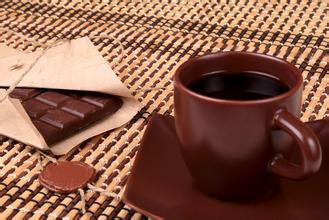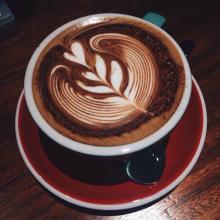Introduction to the description of taste and flavor of coffee beans made by Yega Xuefei siphon pot
Introduction to the description of taste and flavor of coffee beans made by Yega Xuefei siphon pot
Generally speaking, the unique rich aroma of coffee is the synthesis of the flavor released by the rich substances contained in the raw beans of coffee due to the chemical reactions produced at high temperature. Basically, it can be divided into two major chemical reactions-caramelization (caramelization, oxidation and browning of sugars) and Mena reaction (Maillard reaction, reaction of amino acids with carbohydrates). Both reactions require the participation of carbohydrates, and the rich sucrose in raw beans provides the materials needed for these two reactions. Previous studies also found that there was a positive correlation between sucrose content and coffee bean flavor. From the table below, it can be seen that the content of sucrose (Sucrose) in Arabica is twice as much as that in Robusta, which also explains why the flavor of Arabica coffee beans is better than that of Robsta.
(1) Caramelization: the sugar in coffee beans is caramelized at about 170-200 ℃, which is exactly the melting point of sucrose (185 ℃) and the temperature of the explosion stage when coffee beans are roasted. The product of caramelization is divided into two parts:
1. The dehydration product of sugar is caramel or sauce.
two。 The pyrolysis products are mainly volatile aldehydes and ketones.
Generally speaking, fire-roasted aroma, caramel and color are produced in the caramelization reaction, as well as other aromatic substances such as maltol, Cyclotene, furan and so on. These compounds can also be found in red wine, fruit juices, cream and other foods. However, if caramel is too much in the baking process is not a good thing, but will cause carbonization, making the coffee dry and choking. If the caramel is not enough, it will make the aroma monotonous and lack of layers.

Important Notice :
前街咖啡 FrontStreet Coffee has moved to new addredd:
FrontStreet Coffee Address: 315,Donghua East Road,GuangZhou
Tel:020 38364473
- Prev

Description of taste and flavor of Columbia Yana Linglong coffee beans introduction of varieties in manor area
The characteristics of Columbia Linglong Coffee beans taste and flavor description of the varieties in the manor area the essence of Colombian coffee is really good, especially the sweetness and acidity balance has always been good! I have tried St. Augustine Manor Coffee in Huila in the past, and I remember it as a sense of sweetness, which greatly increased my affection for Colombian beans. Of course, I have tried some businessmen since then.
- Next

Description of Burundian Coffee characteristics and Flavor introduction of varieties produced by grinding scale
Burundian coffee flavor description taste grinding scale production area variety introduction Burundian coffee was introduced by Belgian colonists in 1930 and is now grown only on small farms. Unfortunately, many of these farms are on the border with war-torn Rwanda, putting pressure on coffee production. Almost all the coffee produced in Burundi is Arabian coffee beans.
Related
- Detailed explanation of Jadeite planting Land in Panamanian Jadeite Manor introduction to the grading system of Jadeite competitive bidding, Red bid, Green bid and Rose Summer
- Story of Coffee planting in Brenka region of Costa Rica Stonehenge Manor anaerobic heavy honey treatment of flavor mouth
- What's on the barrel of Blue Mountain Coffee beans?
- Can American coffee also pull flowers? How to use hot American style to pull out a good-looking pattern?
- Can you make a cold extract with coffee beans? What is the right proportion for cold-extracted coffee formula?
- Indonesian PWN Gold Mandrine Coffee Origin Features Flavor How to Chong? Mandolin coffee is American.
- A brief introduction to the flavor characteristics of Brazilian yellow bourbon coffee beans
- What is the effect of different water quality on the flavor of cold-extracted coffee? What kind of water is best for brewing coffee?
- Why do you think of Rose Summer whenever you mention Panamanian coffee?
- Introduction to the characteristics of authentic blue mountain coffee bean producing areas? What is the CIB Coffee Authority in Jamaica?

